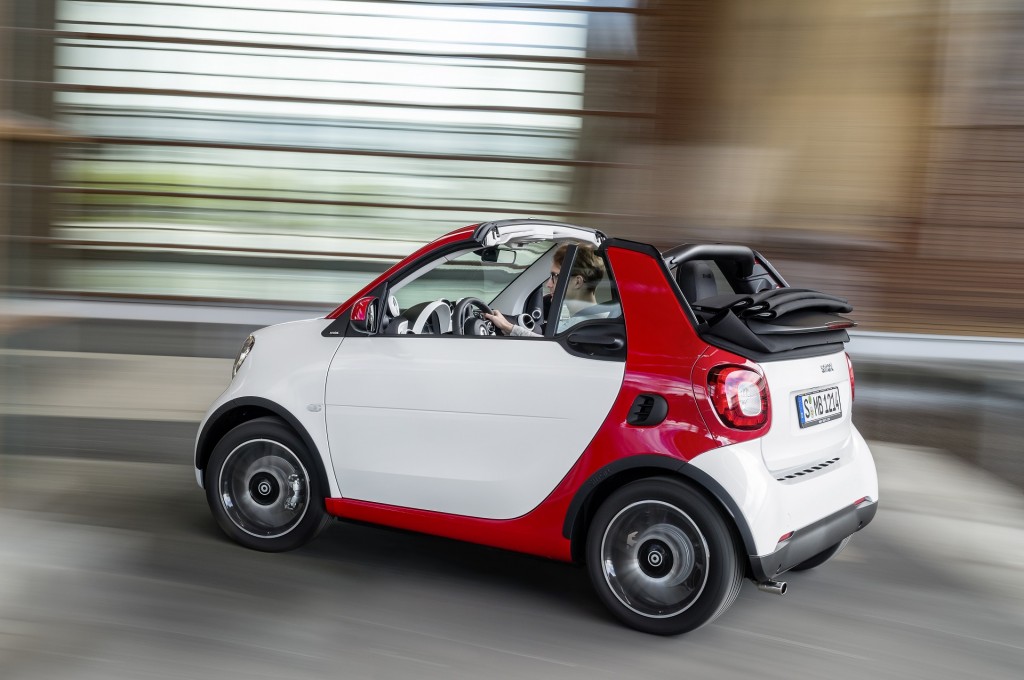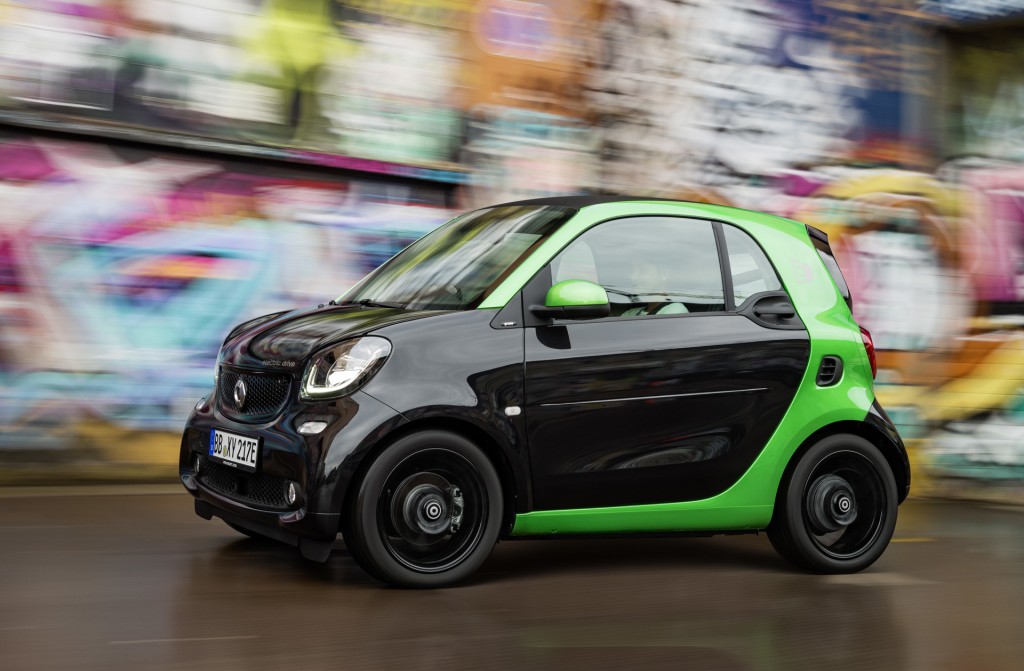Minimal cars are often an appealing idea: why should one person drive a two-ton vehicle with five or more seats on local journeys of 10 miles or fewer?
Then there's the crushingly difficult parking in major European, Asian, and North American cities. Add to that, perhaps, a desire for minimal use of energy and material resources.
So why not design a tiny car, easy to park, for just two people? And if you did, what would the results be?
DON'T MISS: 2017 Smart ForTwo Electric Drive: first drive of electric two-seat car
The question arises as a slew of new Smart models arrives in the U.S. market: the second-generation Fortwo coupe last year, the Cabrio this summer, and the Electric Drive (in both body styles) early next year.
And it's prompted at least in part by a writeup in industry trade journal Ward's Automotive, under the pithy headline "Spendid Idea, Imperfect Reality."
So what has been the impact of the Smart Fortwo, which first launched in Europe way back in 1998 and whose lineup has now been completely redesigned?

2017 Smart Fortwo
The answer for North America is simple: the minimal Smart Fortwo has had minimal impact.
After a burst of sales in 2008, when gasoline prices were soaring and the car was brand-new, Smart sales transferred from independent retailer Penske to Mercedes-Benz USA.
Over the eight years since, sales have averaged roughly 10,000 per year—never again reaching the 25,000 of that first year. That's minimal in a market of 17 million vehicles.
CHECK OUT: Now We Know: U.S. Buyers Don't Much Want Tiny Two-Seat Cars (Jan 2013)
The only car that can be considered a direct competitor for the Smart, Toyota's Scion iQ "3+1-seat" minicar, was pulled from North America after a five-year run starting in 2011.
Its sales never remotely reached the predicted 1,700 to 2,000 units a month predicted at launch; it averaged about 750 units a month in its second year on the market.
In other words, U.S. buyers aren't much interested in very small cars with only two usable seats. (Canada got diesel Smarts starting in 2005, by the way.)

2017 Smart ForTwo Cabrio
Both the Fortwo and the iQ did relatively better in Europe, where the Smart can be parked end-in to the curb in some areas (illegal throughout the U.S.).
Hundreds of thousands of Smarts have been sold across Europe as a whole since its launch.
But a 2013 analysis by London's Bernstein Research dubbed the Smart the most money-losing vehicle line of all time, suggesting that it had cost parent company Daimler a whopping $4.6 billion over 15 years.
READ THIS: 2016 Smart ForTwo: First Drive Of All-New (gasoline) Two-Seat Minicar
The culprits were higher-than-anticipated costs to develop and engineer the car combined with lower sales than projected.
And this points to the challenge of very small cars: they cost as much to develop, and perhaps more, than larger four- or five-seat cars.
Rising expectations for crash-safety standards in particular pose a challenge, and advanced technology like hybrids can't be cost-justified to boost their fuel economy to the level of, say, a Toyota Prius.

2017 Smart ForTwo Electric Drive
Numerous anecdotes from Smart drivers suggest that the car's tiny size leads U.S. observers to expect EPA gas-mileage ratings of 60, 70, even 100 miles per gallon.
They're stupefied when they hear that the Smart lineup averages roughly 35 mpg combined in this year's EPA ratings.
As we wrote in a recent review of the latest Smart—which is a far better car than its unpleasant-to-drive predecessor—unless ease of street parking is your primary criterion for a new car, many slightly larger models offer more capacity, better flexibility, and often far higher fuel efficiency.
_______________________________________













